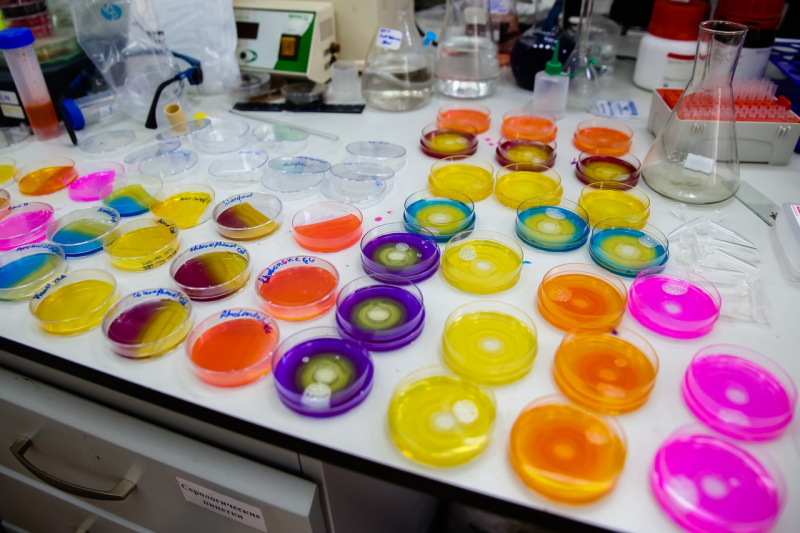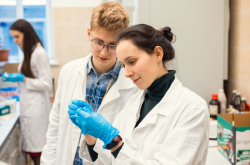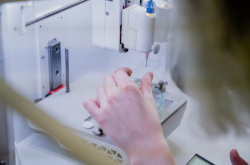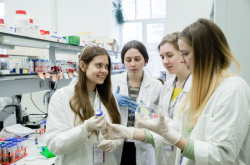SCAMT Workshop Week takes place twice a year: the international English-language school in the summer and the Russian-language one in the winter. The fifth in a row, this school was held in very unusual circumstances. Nevertheless, the organizers managed to overcome the limitations imposed by the online format, preserving the school’s motto of “less lectures, more practice” – in a very non-trivial way. All the participants were sent special lab kits, using which they could complete a project, or its part, at home.
Usually, the July session is attended by students from all over the world – but this time, due to obvious reasons, all international applications had to be declined. Still, it was decided to keep English as the school’s main working language – this was a wish of the participants themselves.
The international aspect was maintained by invited experts – after all, the online format has its own advantages. Delivering talks as part of the program were Mario Pagliaro from the Italian National Research Council, Kirill Afonin from the University of North Carolina at Charlotte, and Phillip Buckhaults from the University of South Carolina.
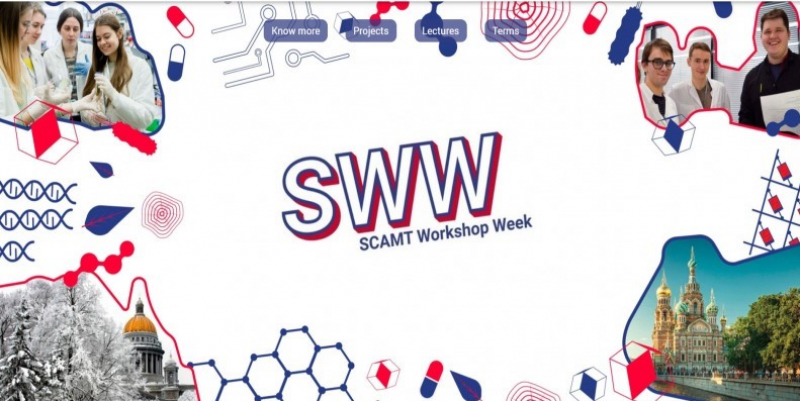
Another defining feature of this year’s school was the expansion of its educational and practical program thanks to the engagement of group leaders working at SCAMT within the framework of the ITMO Fellowship program. Among the new additions was the project Immunity Against Cancer, which proved very popular among the applicants. Unfortunately, though, this project was left without its practical part, which had to be replaced with computer modeling. However, all participants were given a general lab kit for decellularization of plants, so that everyone could do some manual work.
“When it became clear that the school was to be held online, the question came up of how to maintain the school’s high level and signatory features. We didn’t want to postpone it to the next year or replace all classes with regular lectures – we wanted to give the participants the opportunity to do something with their own hands. In the course of a discussion with the school’s coordinators, we came to the solution of sending the participants a home lab kit. This was a major step outside of our comfort zone for us all, as while it’s easy to do in some projects, it’s significantly harder to achieve in others. On top of that, there was a problem of urgently purchasing all the necessary reagents and sending the kits all over Russia – when air mail wasn’t an option. We even delivered some boxes to their St. Petersburg addresses by ourselves. But at the end of the day, we’re happy with how everything panned out. And the participants’ reaction was priceless: they were really surprised that what we sent them wasn’t just merch, but entire home labs, and even recorded videos about it,” says Polina Khapaeva, a coordinator of the SCAMT Workshop Week.
According to the organizers, despite all the difficulties and technical limitations, they managed to run the event as it was initially envisaged. ITMO.NEWS reached out to the workshop’s participants to ask about their impressions.
Gabdulla Kurbanov
student at Peter the Great St. Petersburg Polytechnic University
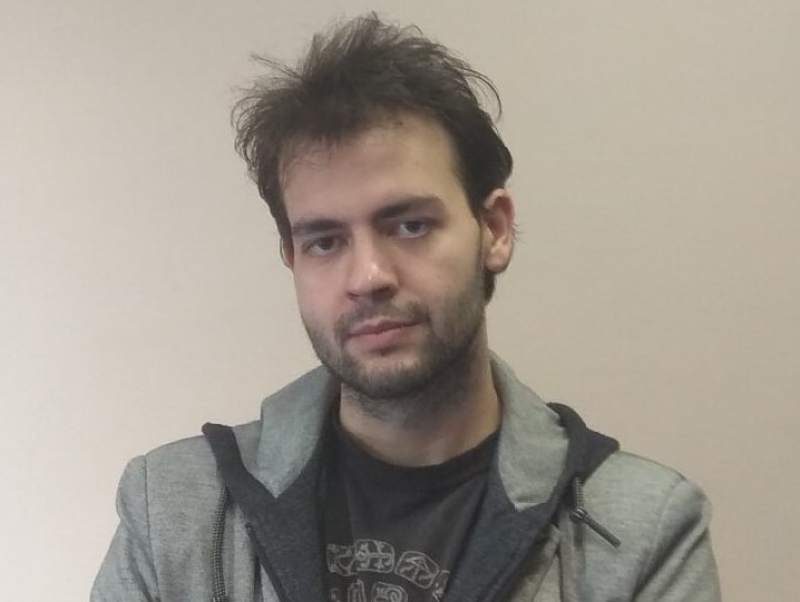
I’m a fourth-year biotechnology major at Peter the Great St. Petersburg Polytechnic University. Apart from my studies, I have spent the past year and a half working at the St. Petersburg Nuclear Physics Institute’s laboratory of eukaryotic genetics, which studies repair mechanisms. My scientific interests vary greatly, but I think that molecular biology is the main one.
A friend of mine took part in one of SCAMT’s other projects, and I heard so much about it that I couldn’t not attempt to find a way in. I hadn’t participated in similar schools before, and it seemed interesting for me to try. Truth to be told, I didn’t expect to make it, as my achievements weren’t as impressive compared to other applicants. But I was very glad to participate. I’d like to have another shot at it, but in an onsite format.
I participated in the project on the creation of DNA nanomachines. I read a text about them once in Biomolecule – and it turned out that this text was written by one of the school’s coordinators, Daria Nedorezova. Before school, I personally didn’t know anyone who was published there.
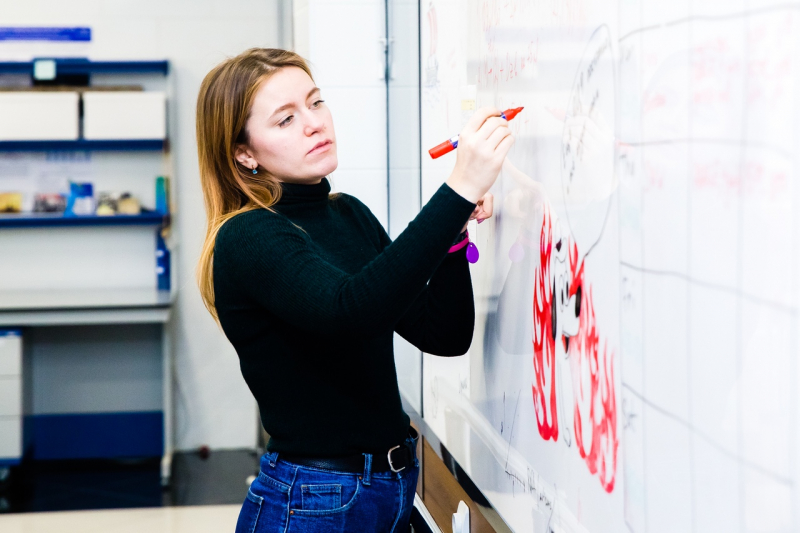
I found this project the most interesting – I was attracted to the methods used, which I was to learn in the course of my work on it. And, of course, DNA as a research object is a very enticing one in itself.
We had quite a simple practical part – to obtain DNA from a banana, reagents for which are quite accessible. But it was priceless to see how the whole group was rejoicing over the fact that long threads appeared on the surface of the measuring cup. So, sometimes it’s the simpler, the better.
What I remember most is a lecture by Dmitry Kolpashchikov, the head of the DNA nanomachine project. It was then when I realized that the week ahead would be a tough one. Another lecture I remember was one by Mikhail Kurushkin – this really was one of the funniest lectures in my life, in the best sense possible of course. I’d never seen such an abundance of jokes and memes, told in a good English language too.
Daria Yanchik
student at the Herzen State Pedagogical University
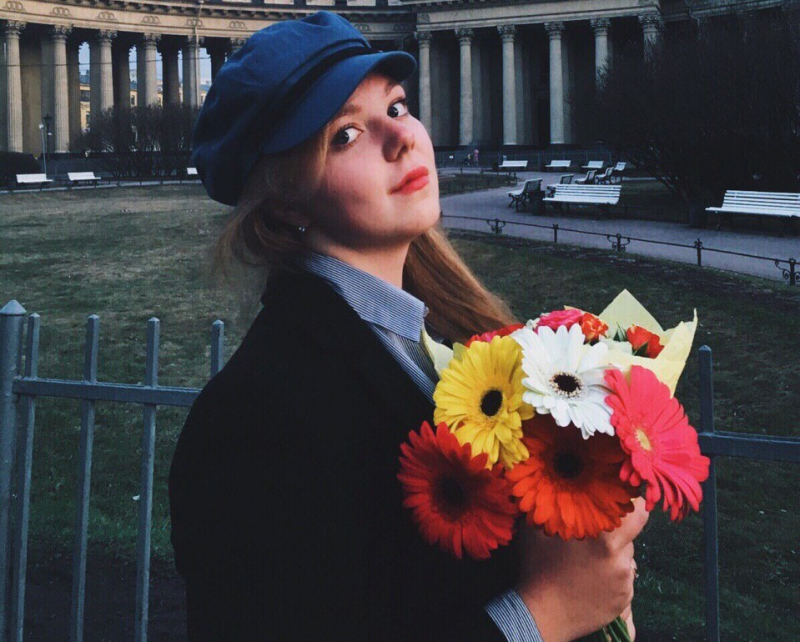
I’m a second-year student at the Herzen State Pedagogical University’s Faculty of Biology. During the school, I worked on the project “Make a Nanopharmaceutical Drug”. We had to synthesize two types of thrombolytics, one based on magnetite and the other based on calcium carbonate or vaterite. We were sent a kit containing reagents for two experiments, not counting the general decellularization workshop. In the first experiment, we synthesized magnetite in home conditions, and in the second, we had to create a real blood clot on a glass slide and lyse it with magnetite. It was difficult to use insulin syringes instead of dispensers, but we did it.
We worked in a team that consisted of five members and two coordinators. I was the “youngest” one – the majority were senior-year students or graduates. It was funny to discover that while there was a distance of several thousand kilometers between some of us, two of the girls and I were practically living in the same district. And we all met here on this project. It wasn’t very difficult to adapt to online communication, actually. As part of our work, we communicated via Zoom, we had our own group chat, and I was able to make friends with people from other teams even despite the distance.
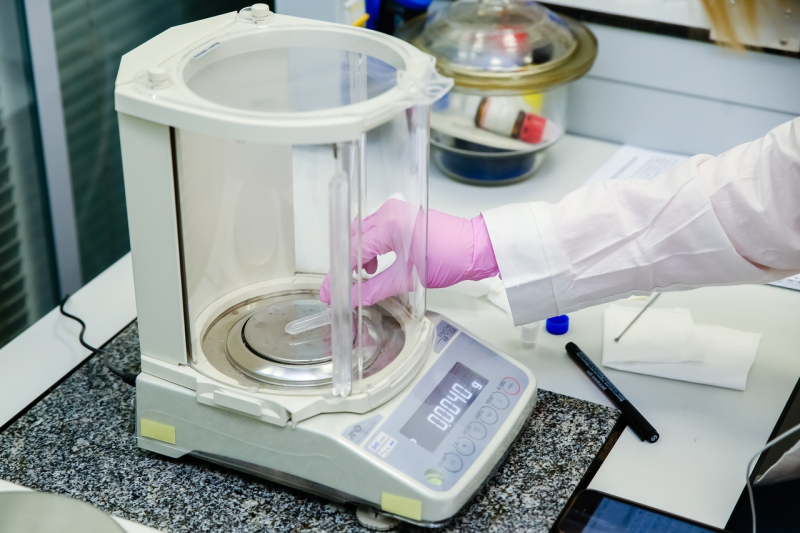
First and foremost, I liked the fact that SCAMT decided to risk it and hold the school in this format instead of just calling it off. Yes, of course, we’d all have liked for it to be held on campus, so that we could wear lab coats, touch an electron microscope, and witness how real science is done. But coordinators did a fantastic job and approached our workshops and classes with great care – as if they were held onsite. You practically could feel their genuine interest through the screen.
I liked that the school is practice-oriented; in other words, that we had to do things for our project with our own hands. It’s great when you have the opportunity to not only learn how something works in practice but also implement it on your own and get a result. That said, the theoretical part was also first-class, and I loved the lectures. The distance format did offer one benefit: all lectures were recorded, thanks to which we can now access them anytime.
I also liked the research topics that are explored at SCAMT, and the summer school is a perfect opportunity to familiarize yourself with these first-hand. I’d never heard of SCAMT before the school, and now I really want to do an internship there in the winter.
Anna Batueva
student at Udmurt State University
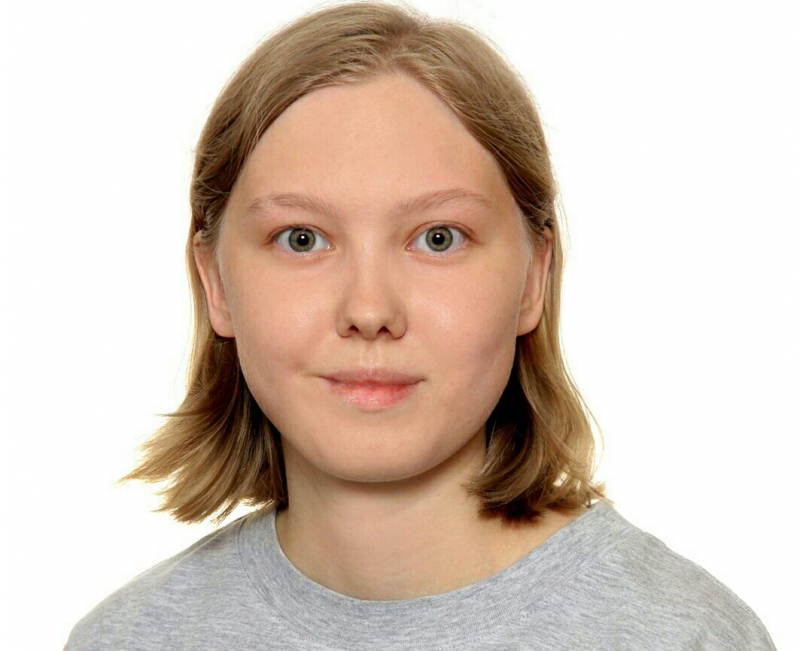
I’m studying to become a biologist at Udmurt State University – I’ve just finished my first year. At the school, I worked as part of the project Immunity Against Cancer, creating a 3D matrix for cell cultivation. I chose the topic of oncology as I’ve been focusing on it for many years now, and this project seemed like the most interesting one among what was on offer.
Our work was purely theoretical – we would glean all the information in papers on the topic and use this research to generate our own matrix. Sadly, we didn’t get to test the finished model. And besides, we opted for glioblastoma cells for cultivation, which simply can’t be obtained at home. We were also sent a couple of cases by the laboratory of experimental oncology. Solving them, you could get a sense of the laboratory’s real-life projects.
The first time I heard about the school was in winter, I looked through all the projects and decided to try my hand at oncology. I really hoped that the school would take place onsite in St. Petersburg. But on the other hand, I was left really impressed by how the school was organized online. Even in the situation we found ourselves in, via Zoom, the organizers managed to convey the entire summer school atmosphere and show how limitless science can be. Of course, I’d expected some practice within ITMO’s walls, but I still learned a lot of new and interesting things that can come in handy in my scientific work.
Maria Akopova
Bachelor’s graduate of the Russian Technological University (MIREA)
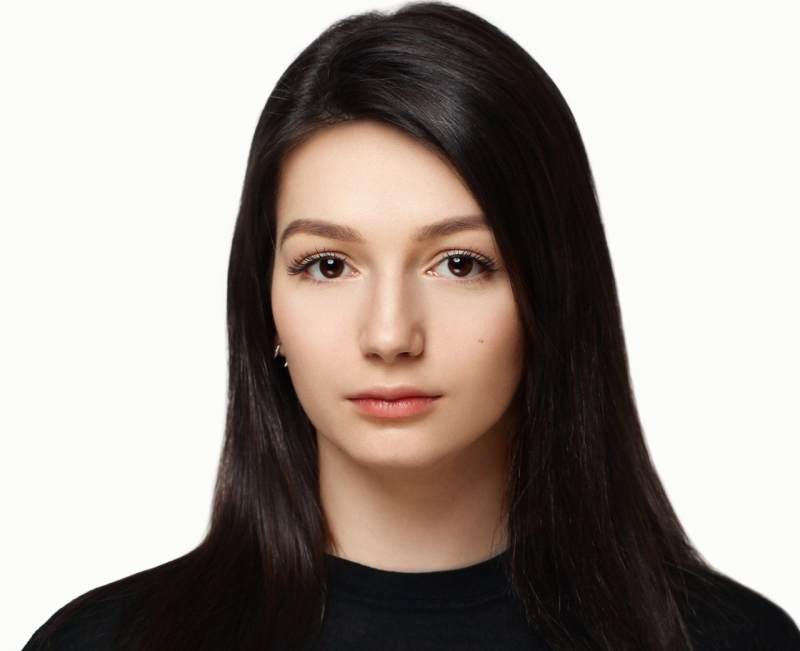
This summer, I graduated with distinction from the Russian Technological University (MIREA) with a Bachelor’s degree in chemical technology of biologically active compounds. But although I’m a chemist by education, I wrote my thesis at the Institute of Bioorganic Chemistry of the Russian Academy of Sciences on the topic of tissue engineering – in other words, working with cells. And I realized that I wanted to develop in this direction going forward, and my dream now is to study molecular biology at SCAMT.
Initially, I wanted to combine my specialization with informatics, and found out from my acquaintances that ITMO offered infochemistry and bioinformatics tracks. I went on the website and got lost there for a couple of days – I was really impressed by everything going on there, from the subjects to the website’s interface. Then I saw the biotechnology track and understood that that was what I wanted to do. So I wanted to enroll at ITMO in the first place, and then I saw the workshop announcement and applied immediately. I didn’t know then that participation in it gives you 100 points at entrance examinations. I thought it was just for the select few and started preparing for the exam – and was pleasantly surprised.
I was part of the “Create Carbon Constructor” project and got sent everything I needed for the experiment: test tubes, syringes, Petri dishes, glass rods, penicillin, citric acid, NaOH, gelatin, and deionized water. The experiment itself was built in such a way that we could recreate it at home. And what we couldn’t do at home, the organizers showed us via Zoom.
Tamara Yakimova
student of Lomonosov Moscow State University
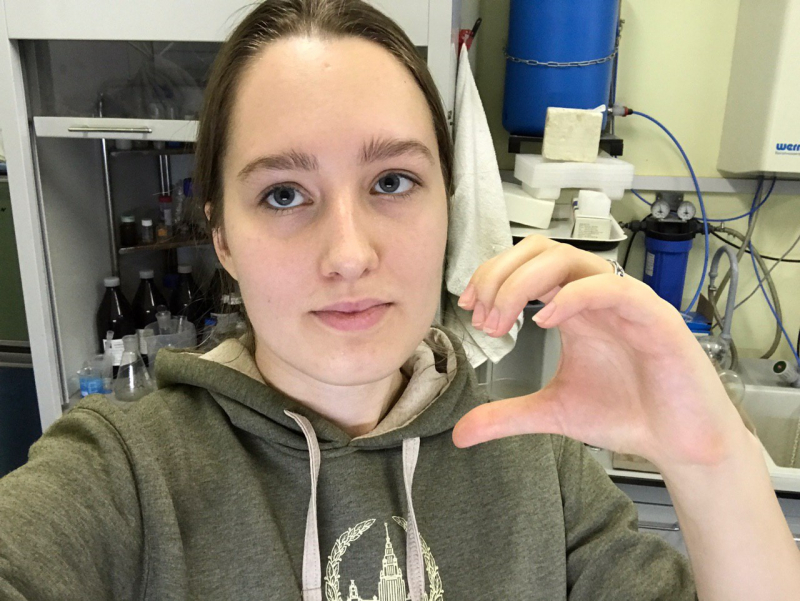
I’m a third-year student at Lomonosov Moscow State University’s Faculty of Materials Science, specializing in chemistry, physics and mechanics of materials. I also work at the Chemical Design of Bionanomaterials Laboratory of the Faculty of Chemistry’s Department of Enzymology.
At the workshop, I worked on the project “Create MAGnetIC Spider Silk” – we focused on the creation of magnetic spider silk based on natural samples obtained at SCAMT. This project seemed interesting to me as it included working with a real biological object that has a huge application potential in medicine.
Magnetic spider silk is a hybrid material based on natural spider silk and ferromagnetic particles. At the SCAMT Laboratory, the silk is obtained from the Linothele fallax spiders and then treated with nanoparticle sol.
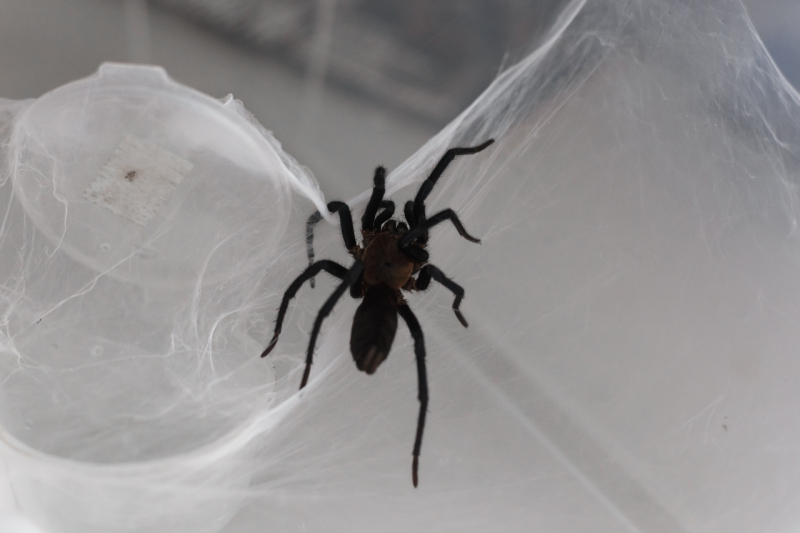
As the workshop was held remotely, we weren’t able to meet the spiders live, but it was great to watch them through the camera. We were sent spider silk samples which we had to clean on our own before treating them with nanoparticles – for this, we washed them one by one in distilled water and isopropyl alcohol. In the laboratory, a sol of magnetite nanoparticles was synthesized for us. We, too, synthesized the same magnetite to compare, but based on a different approach, which was safer and more feasible to do in home conditions – we had to dissolve some iron salts and, having heated them, add ammonia. The resulting black particles are very responsive to the magnet – it’s a simple and beautiful synthesis. We then had to condition the silk with both nanoparticle samples and compare its response to the magnet. Both a sample based on laboratory nanoparticles and a sample based on homemade ones were magnetized.
I liked both the way the event was organized and the fact that the team wasn’t afraid of the distance format and risked holding the workshop in a format that was new to them. It’s great that we had the opportunity to do something with our hands, even though the scope of this manual work was limited compared to what was planned initially, as well as the opportunity to watch how work was being done at the lab. Lectures were really good – it was unexpected and great to listen to the invited speakers from Italy and the US. Also excellent were lectures on soft skills. Some of these aspects were covered at my university, but many things were new to me. I’d long been planning to learn how to work in a good graphics editor, and was further inspired to do so by the lecture on presentations.
Victoria Osipova
student at ITMO University

I’ve just finished the first year of my Master’s in Physics and Technology of Nanostructures at ITMO University’s Faculty of Photonics and Optical Information.
I haven’t cooperated with SCAMT before, but wanted to try my hand at chemistry and biology and gain a new experience. I applied for three projects and got into the “Create MAGnetIC Spider Silk” one in the end.
I was always attracted to the idea of working with already existing materials and the opportunity of modifying them. Spider silk is an example of these materials. What makes it stand out is its high durability– it’s much stronger than Kevlar, and is also biodegradable and environmentally friendly, which is very important given the world’s current environmental state. Looking ahead, spider silk has the potential to be applied in a variety of fields.
I really enjoyed the project, and the experimental part was very interesting. Everything was organized on the highest level. What made me especially glad was the box with all the necessary reagents. I’d thought that as the workshop was to be held remotely, there would be no practical part at all.
As for the theoretical part, I really liked the lecture on applied genomics, microbes and epigenetics, which was delivered by Phillip Buckhaults.
